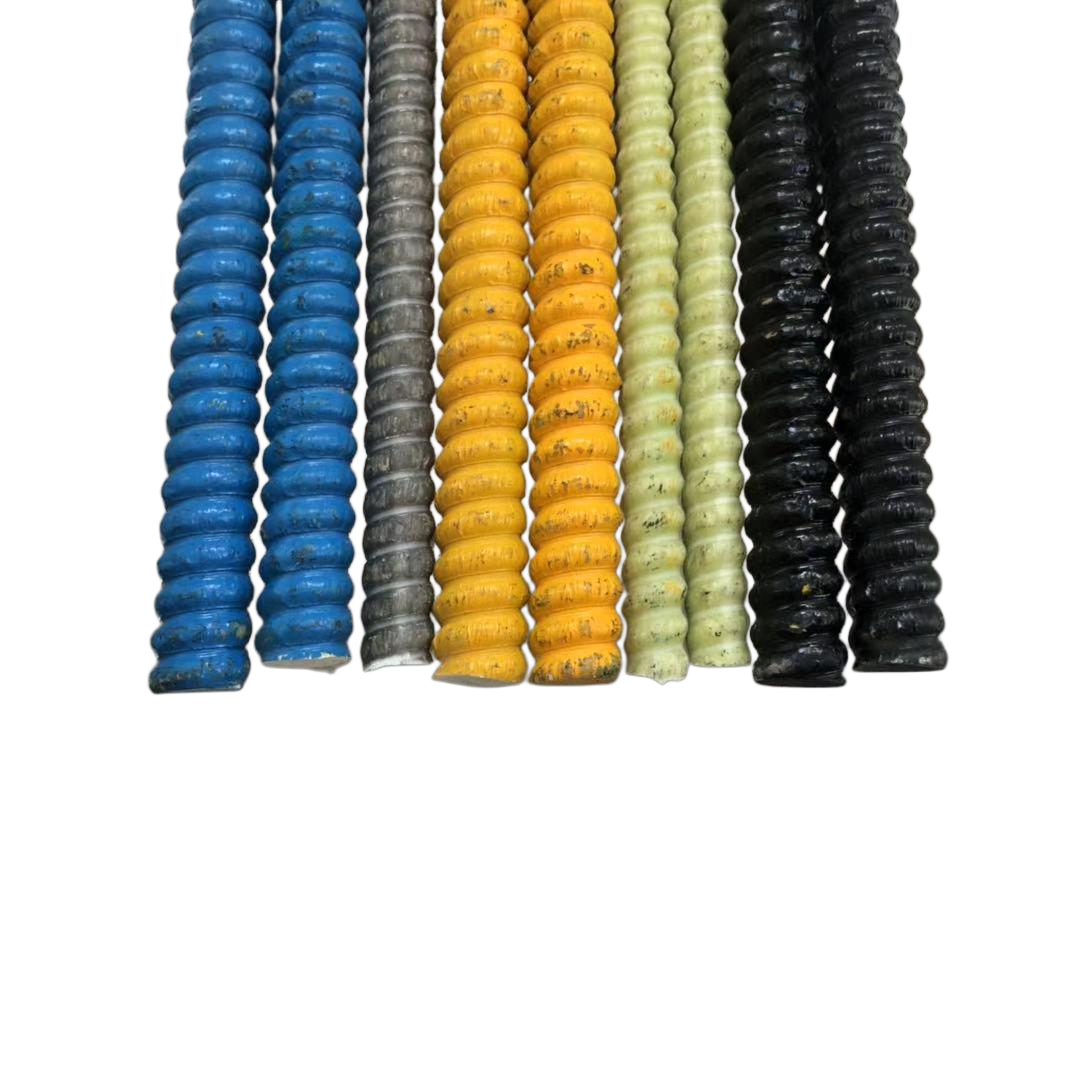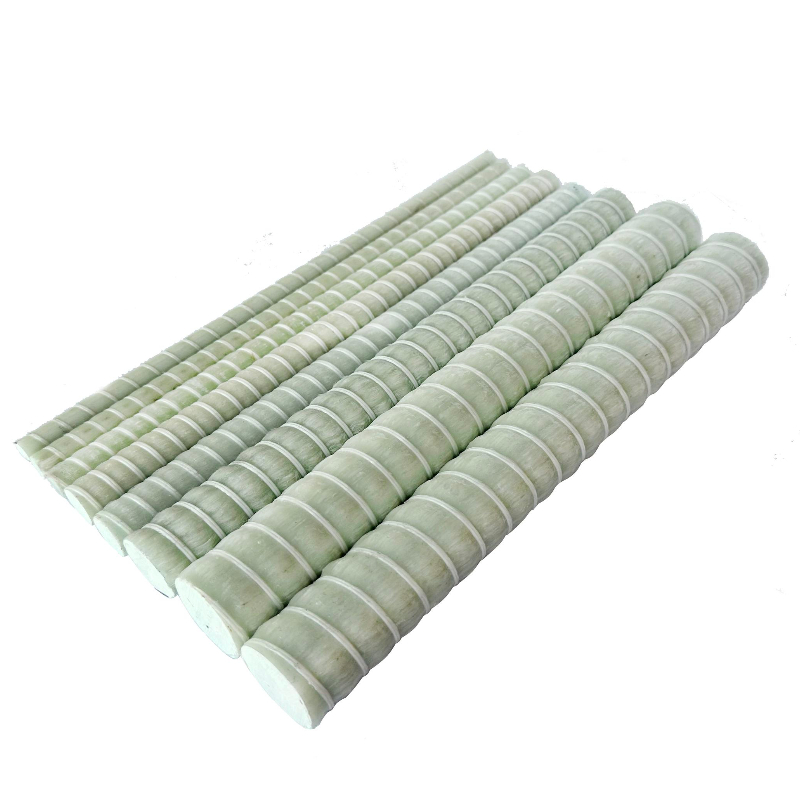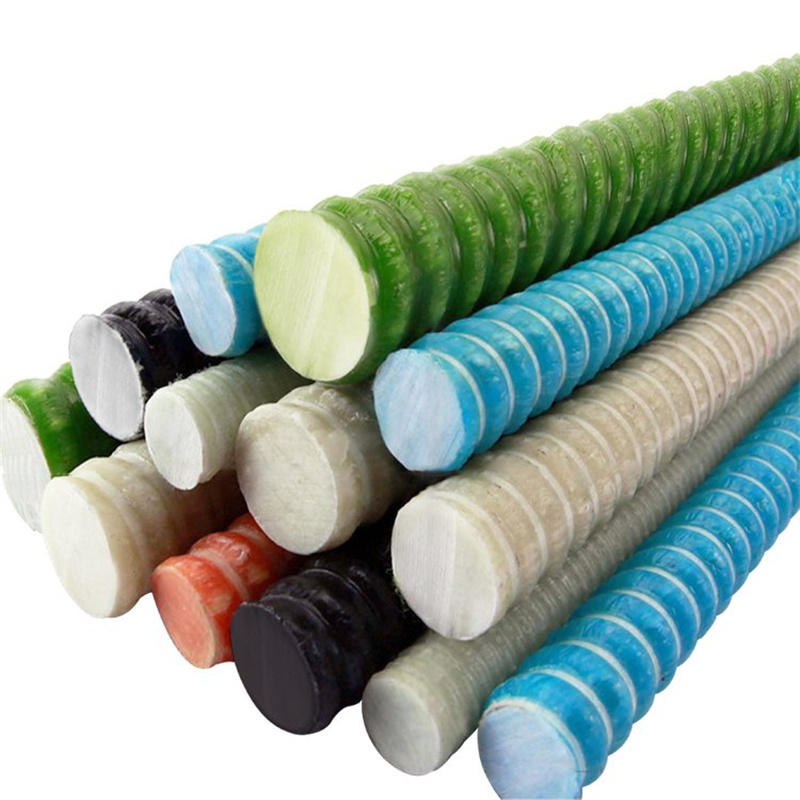Introduction
Construction bolts are fundamental components in the infrastructure of buildings, bridges, and various engineering projects. They serve as the pivotal elements that hold structures together, ensuring stability and safety. The evolution of construction bolts has paralleled advancements in materials science and engineering methodologies, leading to the development of specialized bolts like Glass Fiber Reinforced Polymer (GFRP) bolts. These innovative construction bolts offer enhanced performance characteristics suitable for contemporary construction demands.
Materials and Manufacturing of Construction Bolts
The selection of materials for construction bolts is critical, as it determines their mechanical properties and suitability for specific applications. Traditionally, steel has been the material of choice due to its high tensile strength and durability. However, the susceptibility of steel to corrosion and magnetic interference has led to the exploration of alternative materials.
GFRP bolts have emerged as a viable alternative, offering advantages such as corrosion resistance, lightweight, and non-conductivity. The manufacturing process of GFRP bolts involves pultrusion, where glass fibers are impregnated with polymer resins and pulled through a heated die. This process results in construction bolts that possess high tensile strength and resilience against harsh environmental conditions.
Advancements in Material Science
Material science advancements have significantly impacted the development of construction bolts. The utilization of composite materials like GFRP has addressed many limitations associated with traditional steel bolts. Research indicates that GFRP bolts exhibit superior performance in corrosive environments, making them ideal for infrastructure exposed to chemicals or saline conditions.
Types of Construction Bolts
Construction bolts come in various types, each designed to meet specific structural requirements. The common types include anchor bolts, carriage bolts, and lag bolts. Each type has unique features that make them suitable for particular applications within construction projects.
Anchor Bolts
Anchor bolts are used to attach structural elements to concrete. They are essential in securing columns, beams, and plates to foundations. The design of anchor bolts, especially those made from GFRP, can significantly enhance the load-bearing capacity and longevity of structures.
Carriage Bolts
Carriage bolts have a rounded head with a square neck that prevents them from turning once installed. They are commonly used in wood construction, providing a smooth finish and reducing the potential for snagging on protruding bolt heads.
Lag Bolts
Lag bolts, or lag screws, are heavy-duty fasteners used to connect heavy lumber and other materials that bear significant loads. They are characterized by their hex head and coarse threads, which allow them to grip firmly into wood or plastic.
Applications of Construction Bolts
Construction bolts are utilized in a myriad of applications, from residential buildings to large-scale infrastructure projects. Their selection is influenced by factors such as load requirements, environmental conditions, and structural design.
Infrastructure Development
In infrastructure projects like bridges and tunnels, the integrity of construction bolts is paramount. GFRP bolts, due to their non-corrosive nature, are increasingly being used to enhance the durability of these structures. This shift is informed by studies that highlight the long-term cost benefits associated with reduced maintenance and extended service life.
Commercial and Residential Buildings
In commercial and residential construction, bolts are essential for framing, securing fixtures, and assembling structural components. The use of high-quality construction bolts ensures that buildings can withstand environmental stresses and comply with safety standards.
The Role of Construction Bolts in Structural Integrity
Structural integrity is the cornerstone of any construction project. Bolts play a crucial role in distributing loads and maintaining the cohesion of structural elements. The failure of a single bolt can lead to catastrophic consequences, emphasizing the importance of quality and reliability in bolt selection.
Advancements in bolt technology, particularly with GFRP materials, have contributed to improved safety and performance. These construction bolts are designed to meet stringent engineering standards, ensuring that they perform under various stress conditions.
Load Distribution and Stress Management
Construction bolts facilitate the even distribution of loads across structural components. Engineering designs often rely on bolts to handle tensile, shear, and torsional forces. Advanced computational models are used to simulate stress distribution, aiding in the selection of appropriate bolts for specific applications.
Innovations in Bolt Technology
The construction industry continuously seeks innovations to improve efficiency and safety. Recent developments in bolt technology focus on enhancing material properties and simplifying installation processes.
Smart Bolts
Smart bolts are equipped with sensors that monitor tension and detect potential failures. These bolts provide real-time data, allowing for proactive maintenance and increased safety in critical structures like bridges and high-rise buildings.
Corrosion-Resistant Coatings
Advanced coatings have been developed to enhance the corrosion resistance of metal bolts. These coatings extend the lifespan of bolts in corrosive environments, reducing maintenance costs and enhancing structural safety.
Standards and Regulations
Industry standards and regulations ensure that construction bolts meet minimum safety and performance criteria. Organizations like the American Society for Testing and Materials (ASTM) and the International Organization for Standardization (ISO) provide guidelines for bolt manufacturing and testing.
Compliance with these standards is essential for manufacturers and construction professionals. Quality assurance processes include rigorous testing for tensile strength, fatigue resistance, and material composition.
Certification and Quality Control
Certification programs verify that construction bolts meet specific standards. Quality control measures during production involve batch testing and material verification to ensure consistency and reliability.
Installation Practices
Proper installation of construction bolts is as critical as their design and manufacture. Installation errors can compromise structural integrity, leading to failures. Therefore, adherence to installation guidelines is imperative.
Training programs for construction personnel emphasize the importance of torque specifications, bolt alignment, and inspection procedures. The use of calibrated tools and adherence to manufacturer instructions ensure that bolts perform as intended.
Maintenance and Inspection
Regular maintenance and inspection schedules are essential for structures utilizing construction bolts. Visual inspections, non-destructive testing, and monitoring technologies help identify potential issues before they escalate. Maintenance strategies extend the service life of structures and ensure ongoing safety.
Economic Considerations
The cost of construction bolts is a significant factor in project budgeting. While high-performance bolts like GFRP may have a higher initial cost, their benefits in terms of durability and reduced maintenance can result in long-term savings.
Economic analyses often consider the total cost of ownership, factoring in aspects like installation efficiency, lifecycle maintenance, and potential downtime due to failures. Investing in quality construction bolts can be economically advantageous over the lifespan of a project.
Lifecycle Cost Analysis
Lifecycle cost analysis evaluates the total cost associated with a product over its operational life. For construction bolts, this includes initial purchase cost, installation, maintenance, and potential replacement costs. GFRP bolts often show favorable lifecycle costs due to their longevity and low maintenance requirements.
Environmental Impact
Sustainability is increasingly important in construction practices. The environmental impact of construction materials, including bolts, is scrutinized concerning their production processes, material composition, and end-of-life disposal.
GFRP bolts present an environmentally friendly option. Their corrosion resistance leads to longer service life, reducing the frequency of replacements and associated environmental impacts. Additionally, advancements in recycling composite materials contribute to their sustainability profile.
Sustainable Procurement Strategies
Construction companies are adopting sustainable procurement strategies, prioritizing materials that offer environmental benefits. This approach not only reduces environmental footprints but can also enhance corporate reputation and meet regulatory requirements.
Case Studies and Expert Opinions
Real-world applications of advanced construction bolts provide valuable insights into their performance and benefits. Case studies demonstrate how GFRP bolts have been successfully implemented in various projects, highlighting their advantages over traditional materials.
Experts in the field advocate for the adoption of innovative bolt technologies. Dr. Jane Smith, a structural engineer, notes that "The integration of GFRP bolts in construction represents a significant advancement in enhancing structural resilience and longevity."
Future Research Directions
Ongoing research aims to further improve the material properties of construction bolts. Areas of focus include nanocomposite materials, self-healing polymers, and smart bolt technologies with enhanced sensing capabilities.
Conclusion
Construction bolts are indispensable in creating safe and durable structures. The evolution from traditional steel bolts to advanced materials like GFRP reflects the industry's commitment to innovation and improvement. By embracing these advancements, engineers and construction professionals can enhance structural performance and sustainability.
The future of construction bolts lies in continued research and the adoption of materials that meet the complex demands of modern construction projects. Investing in high-quality construction bolts is essential for the longevity and safety of infrastructure worldwide.



























